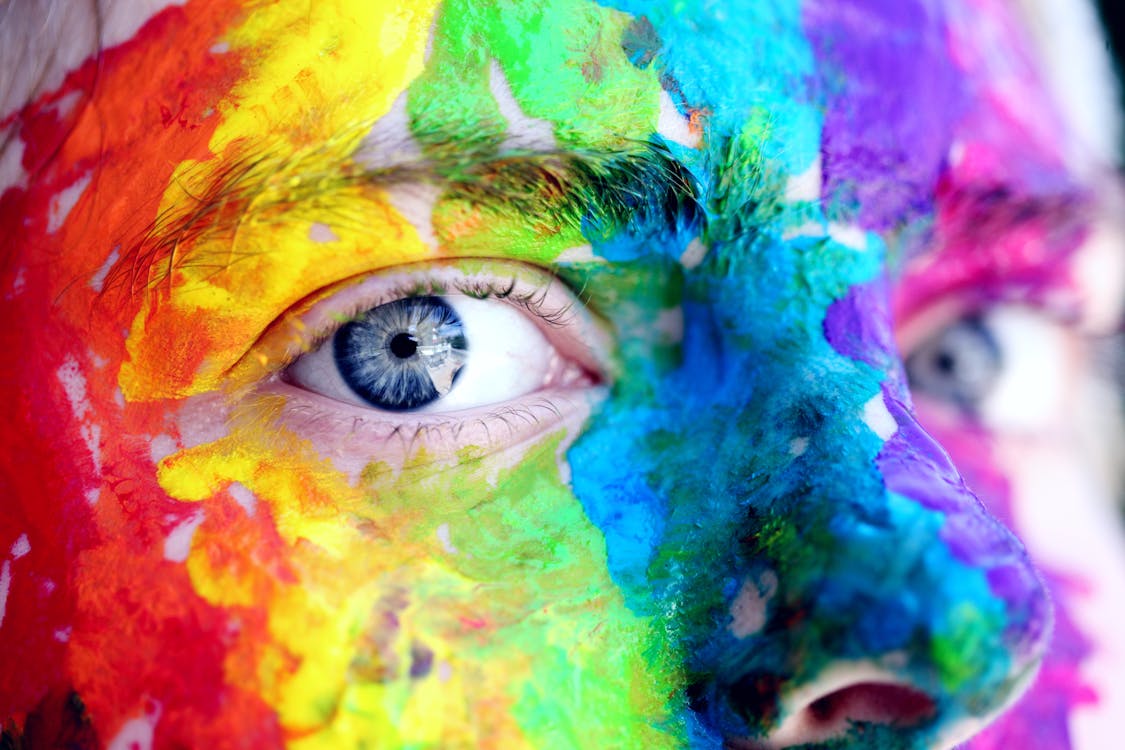The Importance of Color in Direct Mail
Color plays a significant role in the effectiveness of direct mail campaigns. It can grab attention, evoke emotions, and influence recipients’ actions. In this article, we’ll explore the importance of color in direct mail design and how it affects response rates.
Color is one of the first elements that recipients notice when they receive a piece of direct mail. It can convey brand identity, communicate messages, and create a memorable experience. Studies have shown that using color can increase brand recognition by up to 80%, making it a powerful tool for marketers.
How Color Influences Response Rates
Attention-Grabbing: Bright and bold colors are more likely to catch the recipient’s eye than dull or neutral tones. Use contrasting colors to make key elements, such as headlines and calls to action, stand out. Choose colors that complement your brand and resonate with your target audience. For example, vibrant hues may appeal to younger demographics, while more muted tones may be preferred by older audiences. Additionally, incorporating color psychology into your direct mail can help attract attention and generate interest.
Emotional Impact: Different colors evoke different emotions. For example, red can create a sense of urgency or excitement, while blue is often associated with trust and reliability. Consider the emotional response you want to elicit from your recipients and choose colors accordingly. Conduct A/B testing with different color schemes to see which ones generate the most positive response from your target audience. Furthermore, understanding how emotions drive consumer behavior can enhance the effectiveness of your campaigns.
Brand Perception: The colors you use in your direct mail can shape how recipients perceive your brand. Consistent use of brand colors can reinforce brand identity and create a sense of familiarity and trust. Use color psychology to align your color choices with your brand values and messaging. For example, green is often associated with health and nature, making it a good choice for environmentally-conscious brands. This consistency across all marketing channels helps establish a strong and recognizable brand presence.
The Psychology of Color
Understanding the psychology of color is essential for creating effective direct mail campaigns. Each color evokes different emotions and associations, which can influence how recipients perceive your message. Let’s explore the psychological effects of the primary colors: ROY G BIV:
RED
- Psychological Effect: Red is often associated with passion, urgency, and excitement. It can stimulate appetite and increase heart rate, making it an excellent choice for creating a sense of urgency or encouraging action. Use red for headlines or calls to action to grab attention and create a sense of urgency. For example, “Limited Time Offer” or “Act Now!” Additionally, red can evoke a feeling of warmth and energy, making your message more compelling.
ORANGE
- Psychological Effect: Orange is a warm and energetic color that symbolizes enthusiasm, creativity, and warmth. It can evoke feelings of friendliness and positivity. Incorporate orange into your direct mail design to convey a sense of enthusiasm and creativity. For example, use orange accents or highlights to add warmth to your message. Orange can also make your content more approachable and engaging, encouraging a positive response from recipients.
YELLOW
- Psychological Effect: Yellow is associated with happiness, optimism, and energy. It can also grab attention and create a sense of warmth and positivity. Use yellow to draw attention to important information or to highlight key points. For example, use yellow text or graphics to emphasize benefits or incentives. Yellow can also create a cheerful and inviting atmosphere, making your direct mail more appealing.
GREEN
- Psychological Effect: Green is often associated with nature, growth, and harmony. It can also represent wealth, stability, and health. Incorporate green into your direct mail design to convey a sense of freshness and vitality. For example, use green imagery or backgrounds to evoke feelings of nature and tranquility. Green can also suggest prosperity and balance, making your brand appear reliable and trustworthy.
BLUE
- Psychological Effect: Blue is a calming and soothing color that symbolizes trust, reliability, and professionalism. It can also evoke feelings of serenity and security. Use blue for elements that require trust and reliability, such as company logos or contact information. For example, use blue text or graphics for your business name or address. Blue can also instill a sense of peace and stability, reinforcing your brand’s credibility.
INDIGO
- Psychological Effect: Indigo is a deep, introspective color that represents wisdom, intuition, and spirituality. It can also evoke feelings of mystery and depth. Use indigo sparingly for elements that require a sense of depth or mystery, such as background images or borders. For example, use indigo accents to add depth to your direct mail design. Indigo can also convey sophistication and insight, adding a layer of intrigue to your message.
VIOLET
- Psychological Effect: Violet is associated with creativity, imagination, and luxury. It can also represent spirituality and intuition. Incorporate violet into your direct mail design to convey a sense of luxury and sophistication. For example, use violet accents or backgrounds for high-end products or services. Violet can also evoke a sense of elegance and exclusivity, making your brand stand out.
By understanding the psychological effects of each color, you can strategically use color in your direct mail design to evoke the desired emotions and responses from your audience.
Practical Steps for Using Color Effectively
Understand Your Audience: Research your target audience to determine their preferences and psychological responses to different colors. Consider factors such as age, gender, and cultural background when choosing colors for your direct mail campaigns. This understanding allows you to tailor your color choices to better resonate with your audience and drive engagement.
Use Color Strategically: Pay attention to the purpose of each element in your direct mail piece and choose colors that support that purpose. For example, use warm colors like red and orange for attention-grabbing headlines and cooler colors like blue and green for background elements. Strategic color placement can enhance readability and highlight essential information effectively.
Test and Iterate: Don’t be afraid to experiment with different color combinations and layouts to see what resonates best with your audience. Use A/B testing to compare the performance of different designs and adjust your approach accordingly. Testing various color schemes helps you identify what works best for your specific target market.
Track Response Rates: Monitor the response rates of your direct mail campaigns to see how different color choices impact engagement and conversions. Use this data to refine your color strategy and optimize future campaigns for maximum effectiveness. Analyzing response data provides insights into the most effective color combinations for your audience.
Stay Consistent: Maintain consistency in your color usage across all marketing channels to reinforce brand identity and ensure a cohesive brand experience for your audience. Consistent color usage helps build brand recognition and trust among your audience.
Final Touches
Clearly, color is a powerful tool in direct mail design that can significantly impact response rates. By understanding the psychological effects of color and using it strategically, you can create compelling mail pieces that resonate with your audience and drive action. Experiment with different color combinations, track your results, and continuously refine your approach to maximize the effectiveness of your direct mail campaigns.
Incorporating these insights into your direct mail strategy can enhance your marketing efforts and achieve better results. Partner with RA, a leader in direct mail services, to optimize your campaigns and drive down postage costs while leveraging the power of color to connect with your audience effectively.

